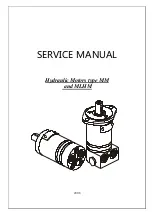
Holden Acadia Owner Manual (Holden-Localizing-Holden-12561773) - 2019 -
crc - 8/28/18
70
Seats and Restraints
Note
Refer to the relevant legislation, an
approved child restraint fitting
station or capsule manufacturer's
information for the recommended
type of child restraint to use.
Selecting the Right System
Infants
Rearward facing infant capsules are
designed so that in the event of a
collision, impact forces will be
evenly spread over the baby's back,
with minimal jarring to the
vulnerable head and neck area.
Young children
Forward facing child seats are for
use when the child is able to sit and
easily hold their head upright.
Booster seats
Booster seats are for when children
outgrow a typical forward facing
child seat, but are still too small for
three point seat belts.
Older children
A child should use a normal three
point seat belt only when:
.
They can sit against the back of
the rear seat with knees bent
comfortably at the edge of
the seat
.
The lap belt rests low and snug
across the hips, not across the
stomach
.
The sash belt is centred on the
shoulder and chest
.
They are able to stay seated like
this for the entire trip
Where to Put the
Restraint
{
Warning
It is safest for children to be
seated in the rear seat.
Only child restraints that have
clips to attach to the vehicle's
anchorage fitting (as shown in the
(Continued)
Warning (Continued)
following illustrations) are to be
used. Earlier types of child
restraints may not attach securely
to this type of anchor.
Use only Standards Australia and
New Zealand approved child
restraints and harnesses. Only
purchase a child restraint which
carries the appropriate Standards
Australia sticker of approval.
Australian States and Territories
and New Zealand have laws
restricting the seating of children
in the front passenger seat. In
most jurisdictions, children under
4 years should not be seated in
the front passenger seat. Check
your local road safety regulations
before seating a child in the
front seat.
(Continued)
















































